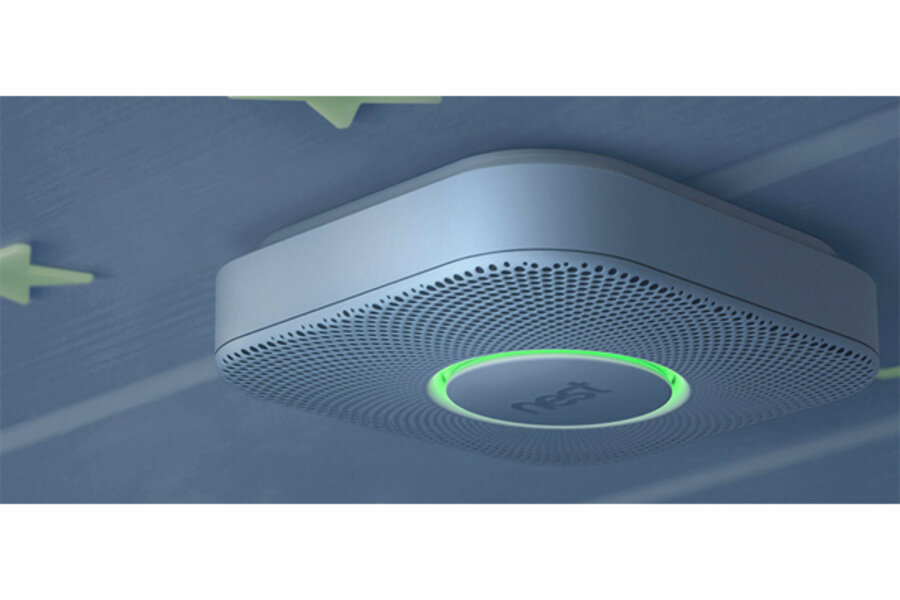Nest Protect reinvents the 'unloved' smoke alarm
Loading...
Gone are the days of getting up on a step stool and hitting an incessantly beeping fire alarm or carbon monoxide monitor until it stops screeching to remind you of a low battery or that your slightly smoking salmon is a potential fire hazard – at least if you get the Nest Protect.
The Nest Protect is the second home gadget introduced by Nest Labs, a start up created by former Apple designer Tony Fadell. The company aims to revolutionize household staples that have been mostly ignored by the innovation crowd, like the smoke alarm, for decades. The product is a mobile app and motion controlled smart device that takes the hassle out of this government-mandated device.
"We want to take the unloved products in your own home and bring them to life in a way that makes them beautiful," Mr. Fadell told to the AP. "There has been very little innovation with smoke detectors in the past 35 years and now we think we have found a way to make them less annoying."
How exactly is that done? The Nest Protect detects smoke and carbon monoxide and automatically alerts a family of any danger by a beep, as well as a spoken alert and an alert on a mobile app. The square-shaped device contains a circle that lights up in different situations: red when there is an emergency, yellow when there are low levels of smoke or carbon monoxide, and green when you turn off the lights and everything is okay, a reassurance Nest calls the “nightly promise.”
If you get multiple devices, the Nest Protect can interact with other Nest devices as well. For example, if there is a fire in the kitchen, all the Nest devices around the house will also light up and speak the same warning – no worries if you aren’t near enough to hear the initial alarm.
The original Nest device, a thermostat that learns your heating and cooling habits and can be controlled by your mobile device, also works along with the Nest Protect. Many carbon monoxide leaks are caused by faulty furnaces, so if the Nest Protect detects higher-than-normal levels of carbon monoxide, it alerts the Nest which will then turn off the furnace in case that is the cause. Talk about a smart house.
And those false alarms? All you have to do is wave your hand a few times in front of the Nest Protect to get it to stop beeping.
But innovation comes at a price. The Nest Protect retails for $129, about $100 more than the average smoke and carbon monoxide alarm. And that is just for one – the National Association of State Fire Marshals say the standard for new homes is “a smoke alarm in each bedroom, one outside the bedroom area that is close enough to be heard through closed doors, and a minimum of one on each level of the home.” For a two-bedroom, two-level home, that’s five Nest Protects or $516. Not to mention the $249 Nest thermostat, if you want the full package.
In an interview with CNET, Fadell says that is just the price tag of reinventing home goods.
“Look, we're talking about revolutionizing yet another category that you interact with at some point in your life or is part of your life,” he says. “This isn't just about business. This is about changing our lives and changing your lives to make it better.”
The device is currently available for pre-order and will be available in 5,000 stores across the United States and Canada starting in November.








